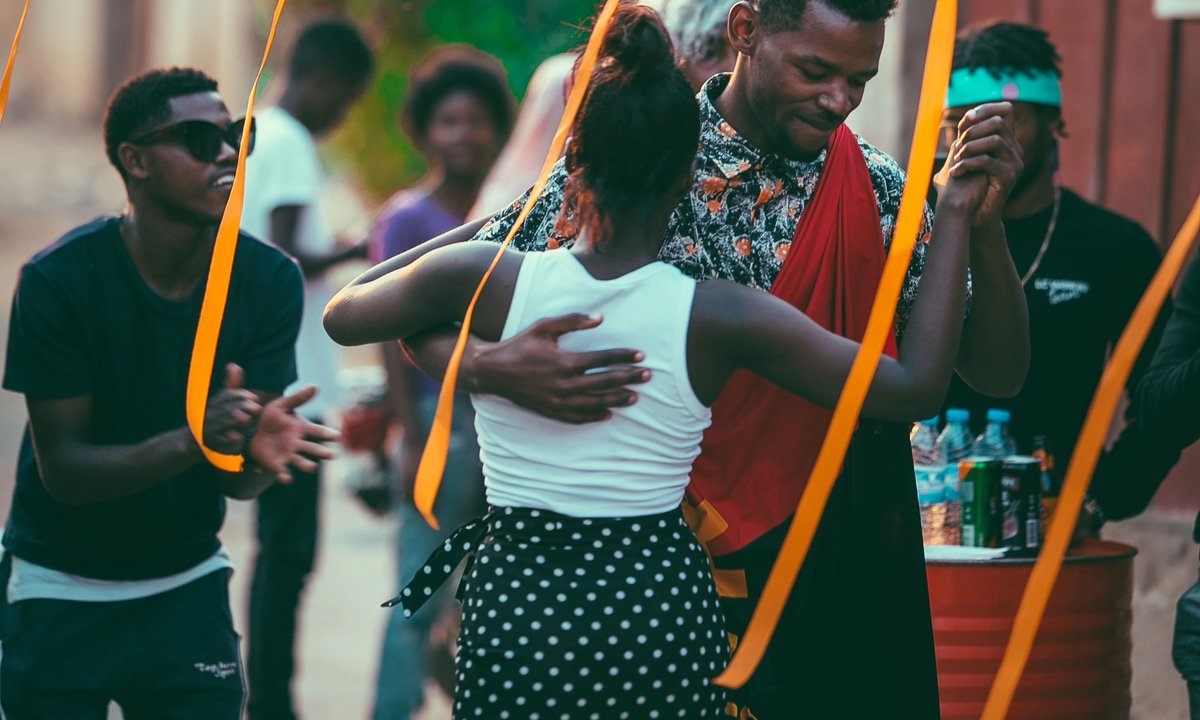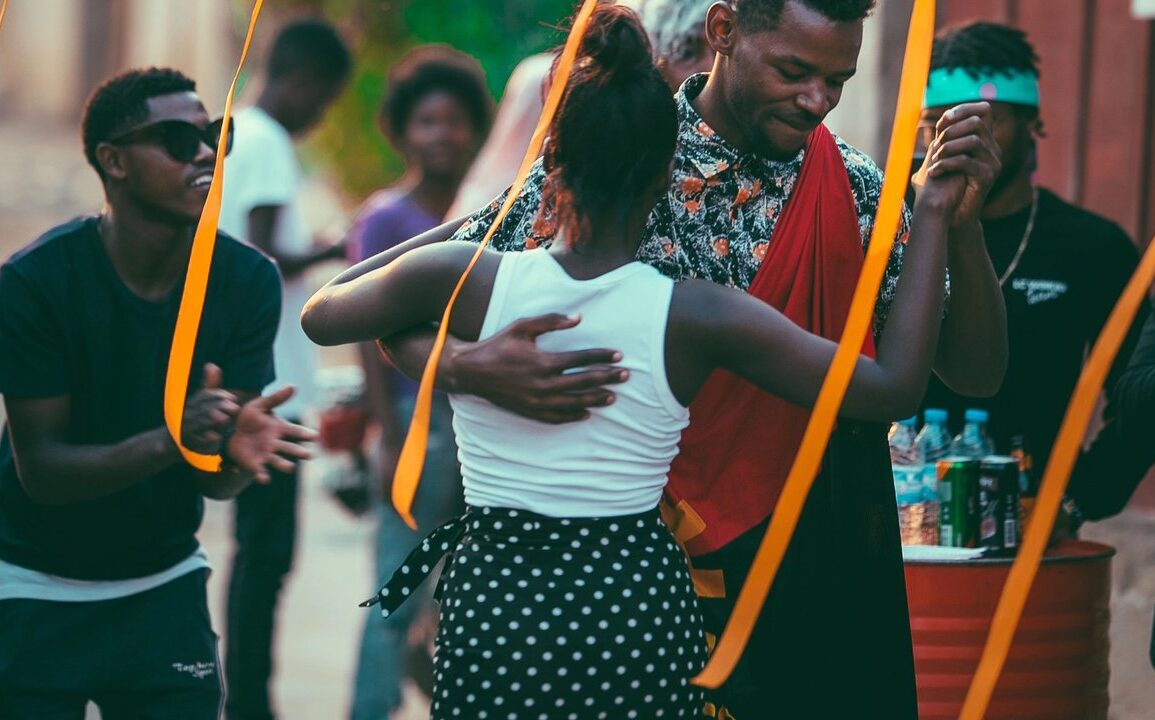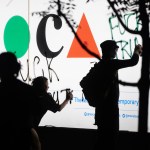
To coincide with the 35th edition of Bienal de São Paulo, the Kizomba Design Museum (KDM) is launching on 6 September. The pop-up project has been designed to offer a unique perspective on the transcultural relationship between Brazil and Portuguese-speaking African countries through the lens of music and dance.
The Angolan style of dance known as kizomba (Kimbundu for “party”) will be used as a medium through which to explore often untold aspects of Brazil’s colonial history with Angola and other west-central African nations, often via Portugal. The KDM will also reflect on broader debates within museology concerning the ways in which cultural institutions can commemorate and archive the legacies of historic performance-art practices.
Kizomba emerged in Angola in the early 1980s. A dance and musical genre characterised by slow and insistent electronic percussion, it became popular in Portugal as an influx of Angolans fled the country’s civil war in the 1980s and 90s. It gradually gained favour among members of the African diaspora who speak Portuguese, particularly in Brazil, where an estimated two-thirds of enslaved Africans were brought to the country from the Angola-Congo region. The KDM—a three-day project staged across three cultural institutions in São Paulo—will therefore explore the seeping presence of Angolan culture in global diasporas through a series of performances and debates.
“We were thinking about how we could share and celebrate the culture and the resilience of the Angolan diaspora, and we kept coming back to kizomba,” says the artist Nástio Mosquito, who co-founded the KDM with music producer Kalaf Epalanga. “Angolans have historically faced social, political and financial humiliation. We were thinking about how we could distil these very complex, layered philosophical ideas in an engaging and non-preachy way.”
There are tentative plans to create a physical space for the museum in Angola, Cape Verde or Lisbon, where it can be closer to the source,
Mosquito says. But, for now, the project has “no object-based outcome”.
The title and theme of this year’s biennial, ‘Choreographies of the Impossible’, uses various dance and movement practices to examine the “dominance of categories and definitions that no longer suffice to describe the world around us”, according to the Bienal de São Paulo’s curatorial cohort, which includes the curator Diane Lima, the artist Grada Kilomba, the anthropologist Hélio Menezes and the artist and museum director Manuel Borja-Villel.
The concept of the “impossible” became central to the biennial’s curatorial team, for it provides a framework to “provoke critical dialogue around the reimagining of political systems”, they said to The Art Newspaper in a joint statement sent over email.
The return of the arts in Lula’s Brazil
The KDM and Bienal de São Paulo at large are taking place as the Brazilian cultural sector experiences a renaissance under the administration of the country’s newly elected president, Luiz Inácio Lula da Silva, known as ‘Lula’. In his oath of office in January, the veteran leader vowed to rebuild a Brazil that had been left in “terrible ruins” following the administration of his predecessor, Jair Bolsonaro.
Lula, who also served as president between 2003 and 2010, won his latest election by a thin margin after spending more than a year in prison for corruption. (His controversial conviction was annulled in 2021.) He received robust support from artists and musicians, who spoke out against the increased censorship that conservative groups aligned with Bolsonaro had lobbied for, as well as the previous administration’s severe cuts to the culture budget.
Since his appointment, Lula has reinstated the nation’s ministry of culture, which had been extinguished under Bolsonaro, and reversed decrees that had reduced funding for projects eligible for the Rouanet Law, a tax incentive for private and corporate donors to fund cultural programming. (Under Bolsonaro, the law had restricted or denied funding for several projects, including much-needed renovations of cultural institutions and those involving LGBTQ+ people and other marginalised communities.) In his first month in office, Lula approved cultural projects amounting to 610m reais ($122m), including 37.1m reais ($7.4m) for the renovation of Rio de Janeiro’s Municipal Theatre.
“These strides align with the themes of this biennial, which seeks to surpass traditional frameworks and reimagine a cultural landscape where global voices are acknowledged and valued,” the curators say. “Our rendition of the biennial adopts a historical perspective, contemplating the past and the notion of time itself. We aspire to question and overturn dominant paradigms and reassess a violent past that appears to be caught in a relentless cycle, all in pursuit of envisioning a more promising future.”
President Lula is also winning support for his stance on decolonisation and diversity issues. “While the biennial does not inherently serve as a political platform, we are undeniably content with the progress within the arts and culture sphere since Lula’s commencement in government,” the curators say. This includes the appointment of the former Afro-
Brazilian singer Margareth Menezes as Lula’s new culture minister. The presence of Menezes, the curators say, has “rejuvenated the previously disbanded culture ministry, and has infused diversity and decolonisation into arts and culture”.
Bienal de São Paulo—the oldest existing biennial after the Venice Biennale—has a long history of serving as a conduit for political activism, most famously in what would become known as the “Boycott Biennial” of 1969, when artists withdrew their work to protest the Brazilian military dictatorship of the time.
On the heels of the contested ousting of the Bolsonaro administration, which was regarded as divisively nationalistic in character, this year’s biennial is its most diverse to date, featuring more than 90% artists of colour. “Brazil is in a healing stage at the moment,” says Mosquito. “The presence of Lula in Brazil, for example, in itself seems like an impossible, choreographed event. I don’t think we could ever imagine an event like this happening again. So, what does that mean for us and the rest of the
Portuguese-speaking world?”
• 35th Bienal de São Paulo, Ciccillo Matarazzo Pavilion and other venues, 6 September-10 December. Kizomba Design Museum, Casa de Francisca, Pivô Gallery, Megafauna bookshop and online, São Paulo, 6-8 September.
This post was originally published on this site be sure to check out more of their content.







